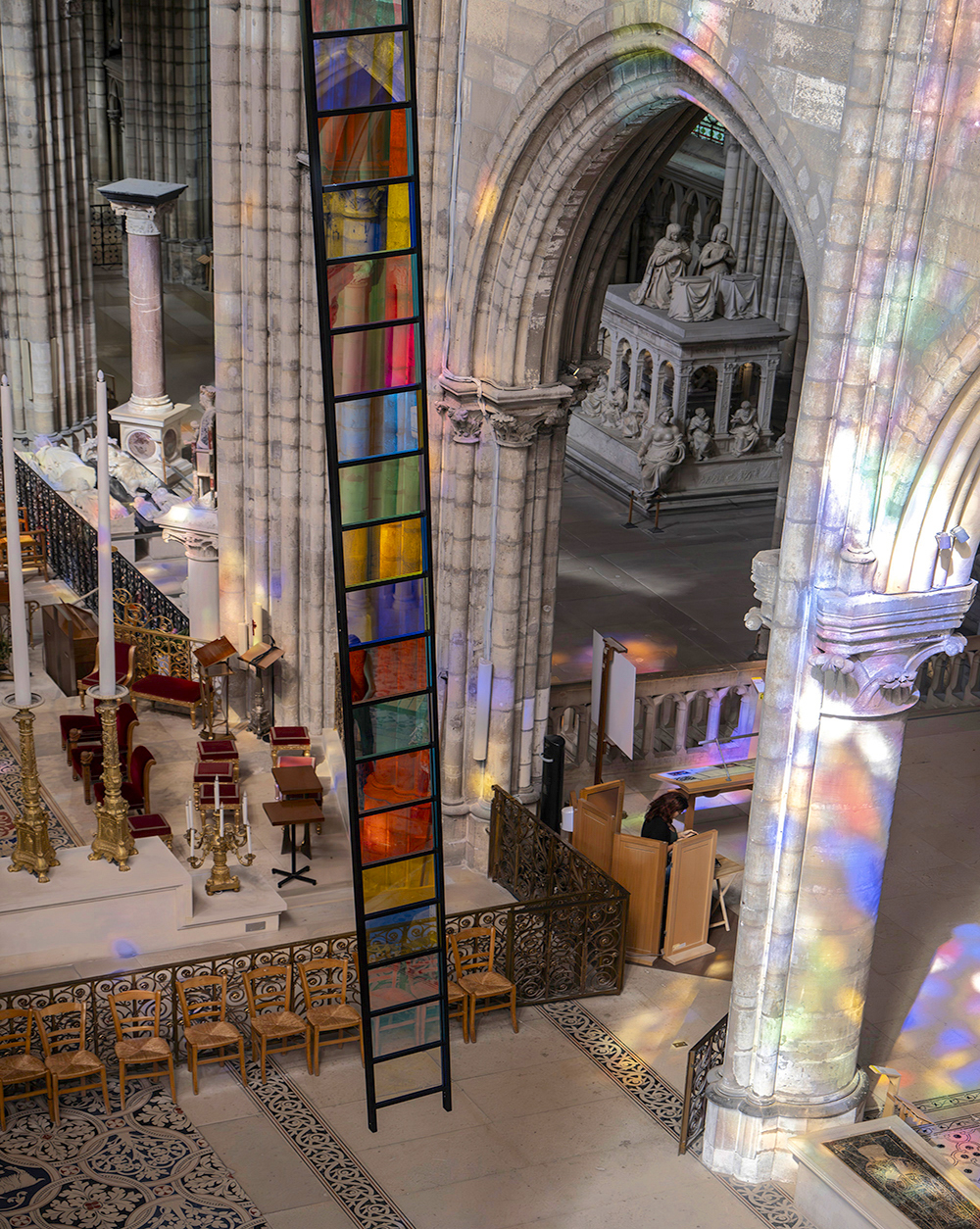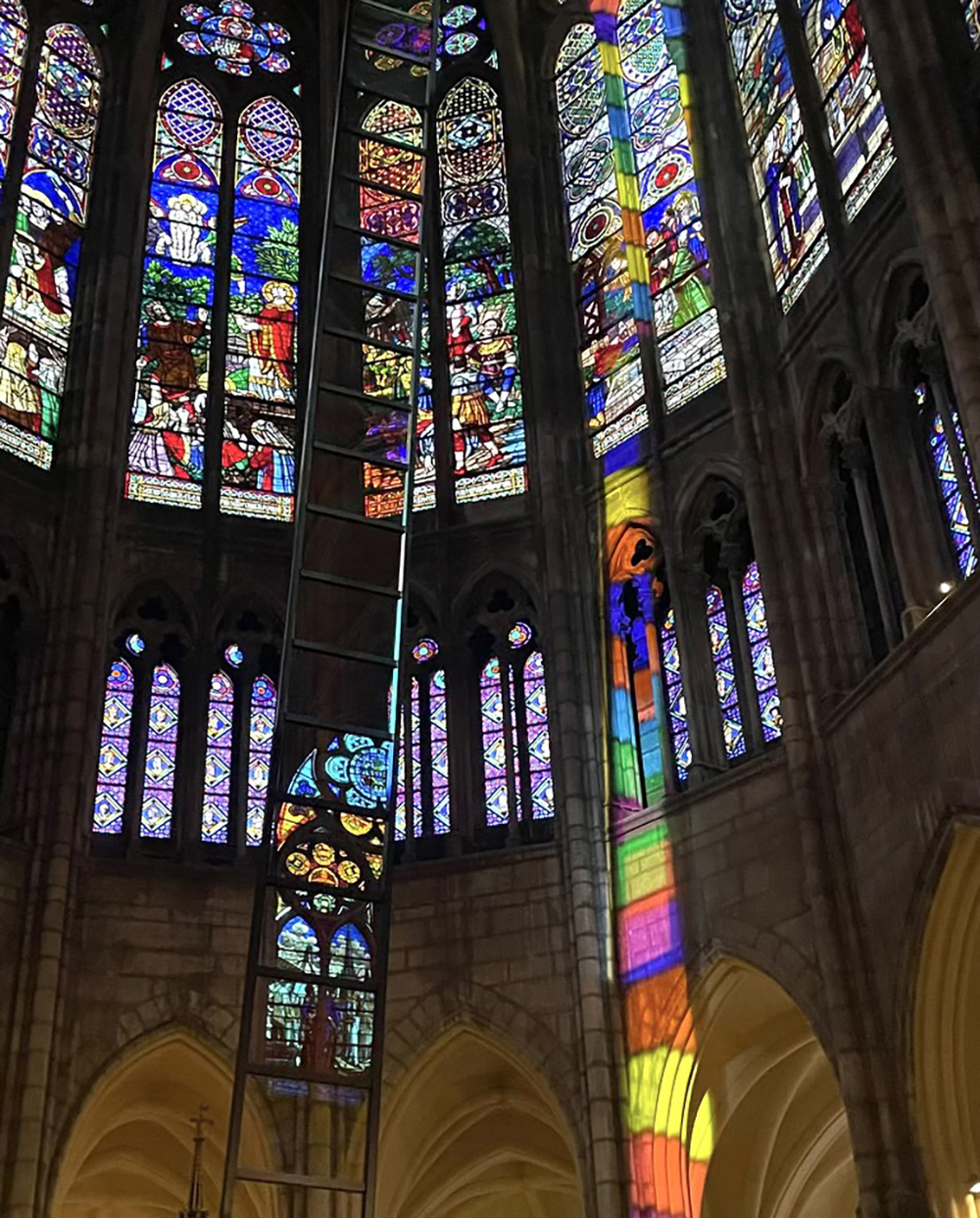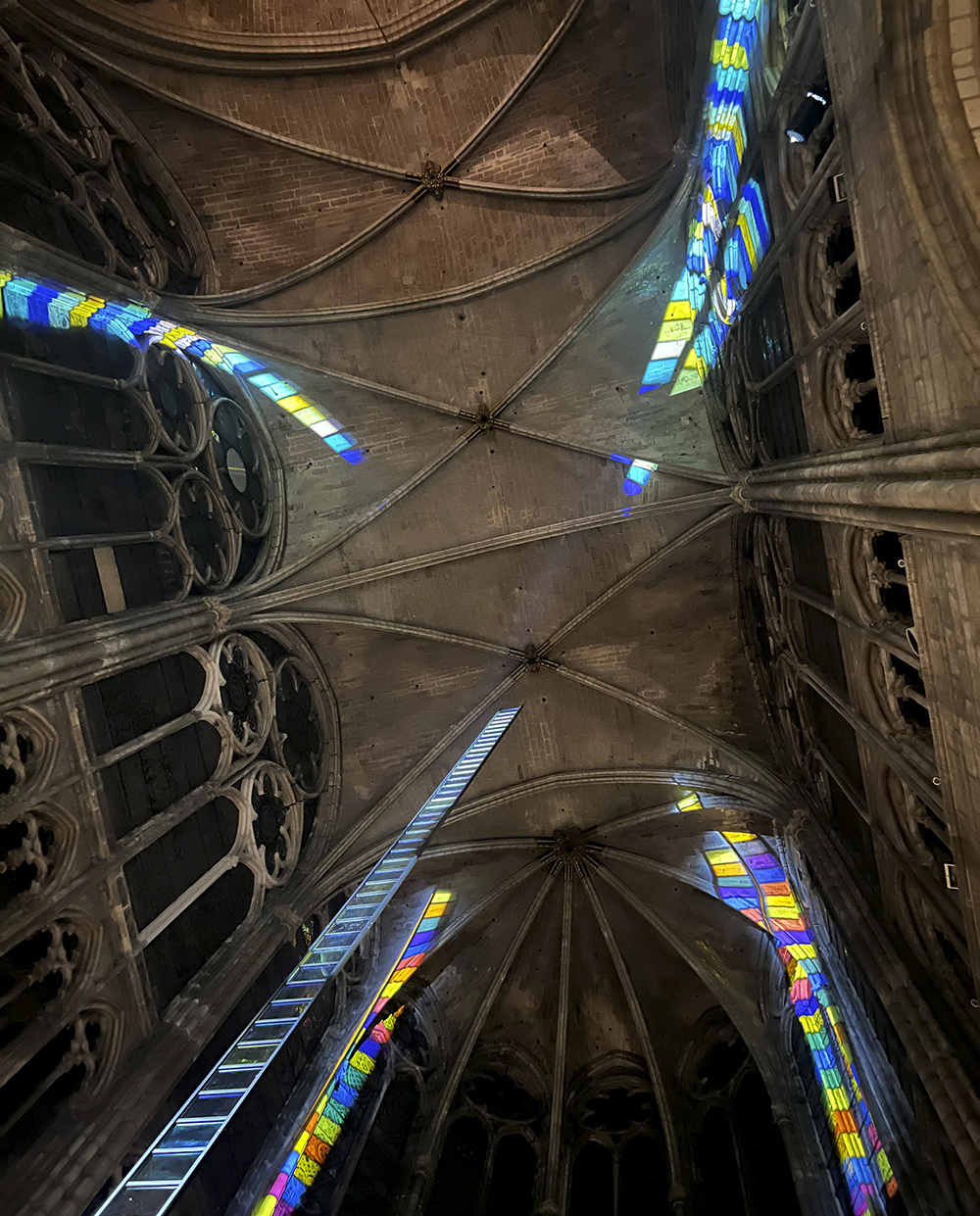STEPHEN DEAN
CRESCENDO
Installation exposée à la Basilique cathédrale de Saint-Denis.
6 septembre 2023 – 6 avril 2025.
Aluminium and dichroic glass.
Height: 15 m / 49 ft.
Work created at the invitation of the Centre des Monuments Nationaux.
Stephen Dean has been invited by the Centre des Monuments Nationaux to present his monumental installation Crescendo at the Basilica Cathedral of Saint-Denis, which will be on display from September 6, 2023, to April 6, 2025.
Crescendo is located in the apse of the Basilica and is surrounded by the radiating stained-glass windows of the ambulatory, which were restored in 2022. The installation is a tribute to the project achieved nearly 900 years ago.
During the 12th century, Abbot Suger initiated an extraordinary program of stained-glass windows in the abbatial church, which was consecrated on June 11, 1144. He conceived an iconography of flamboyant design and sparkling colors, to create a genuine showcase of light within the choir of the basilica. At that time, stained glass was widely used in churches as a new form of symbolism that was associated with light, expressing divine presence.
Stephen Dean’s Crescendo was envisioned as a mirage and a tribute to breathing light. The sculpture, a 15-meter aluminum ladder with dichroic color glass in between each of its rungs is suspended diagonally in the center of the Basilica. The installation alters our perception of the architecture and the stained-glass windows using symbolic and color plays, transparency, and reflection. The title's musical overtone is inspired by the changing luminosity and acoustic dimension of the cathedral.
The installation invites us to contemplate a universal symbol: the ladder. The ladder symbolizes a connection between the celestial and terrestrial worlds and has relevance across eras, cultures, and religions. It has been referred to in various narratives, including the famous Bible episode of Jacob's Ladder, "The Book of Mahomet's Ladder,” Buddhism, and certain forms of shamanism. The ladder continues to hold significance in modern times with the concept of the “social ladder”. This symbol is a constant source of literary and poetic inspiration. It illustrates rising or descending dynamics, unites opposites, and emphasizes the spiritual passage through initiatory levels.
A transition from the visual to the ethereal.
Stephen Dean also intends to create a technological connection between the density of the stained-glass windows designed by Abbot Suger between 1140 and 1144 and the permanent color variations of dichroic glasses developed by NASA for space exploration.
The dichroic process was first experienced in the 4th century more empirically, with the “Lycurgue cup”, a magnificent Roman decorative object housed at the British Museum.
The sequence of dichroic glasses installed by the artist between the ladder rungs has the unique effect of reflecting or projecting opposite colors on various parts of the architecture. The appearance is fleeting, as the saturation of colors shifts depending on the angle from which they are perceived. At first, the eye focuses on the image of the ladder, and then the light seems to split in color swarms. The overall experience creates an optical illusion that mimics natural phenomena, such as a transition from the visual to the ethereal.
As Eric de Chassey, director of the Institut National de l’Histoire de l’Art (INHA), highlighted it in Stephen Dean, The organized Chaos of color, the catalog of I Mutanti exhibition at Villa Medicis in Roma: “The ladders are the culmination of his various works and of their application of one of the properties of dichroic glasses, which changes color according to both the light and the movements of the viewer, so that the entire panel changes, as does its projection on its surroundings. The effects are maximized by the linear arrangement: the colors are diffracted onto the walls, floor, ceiling in a kind of festively chromatic dream …”










